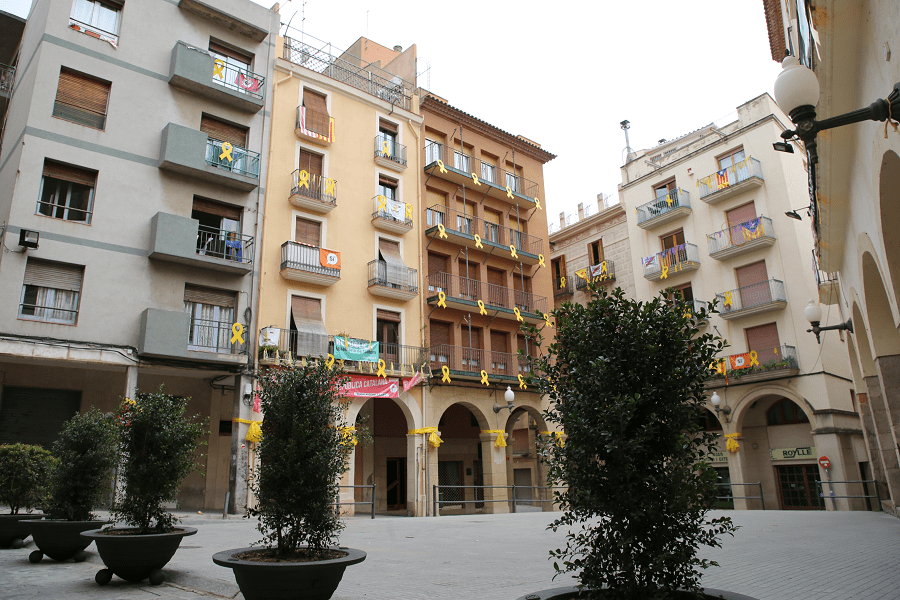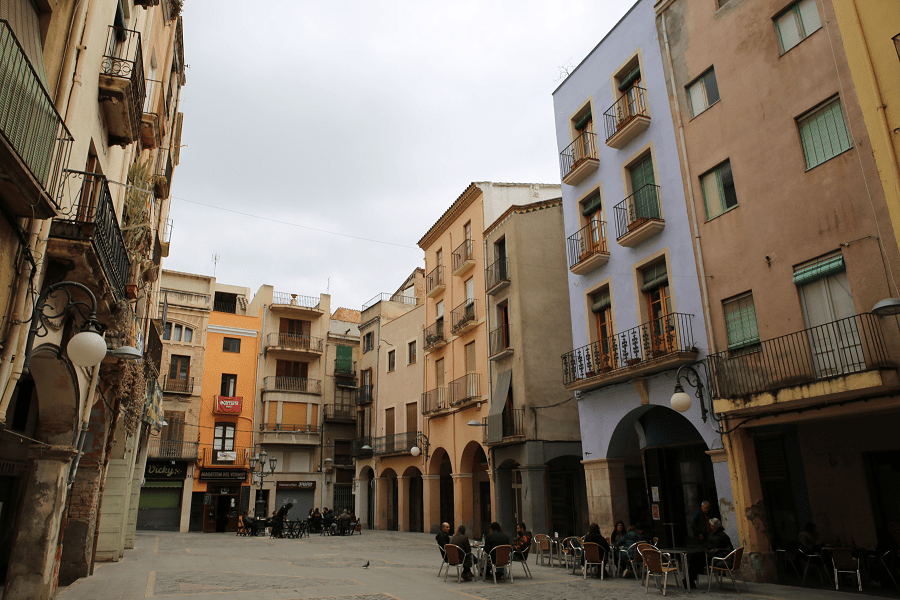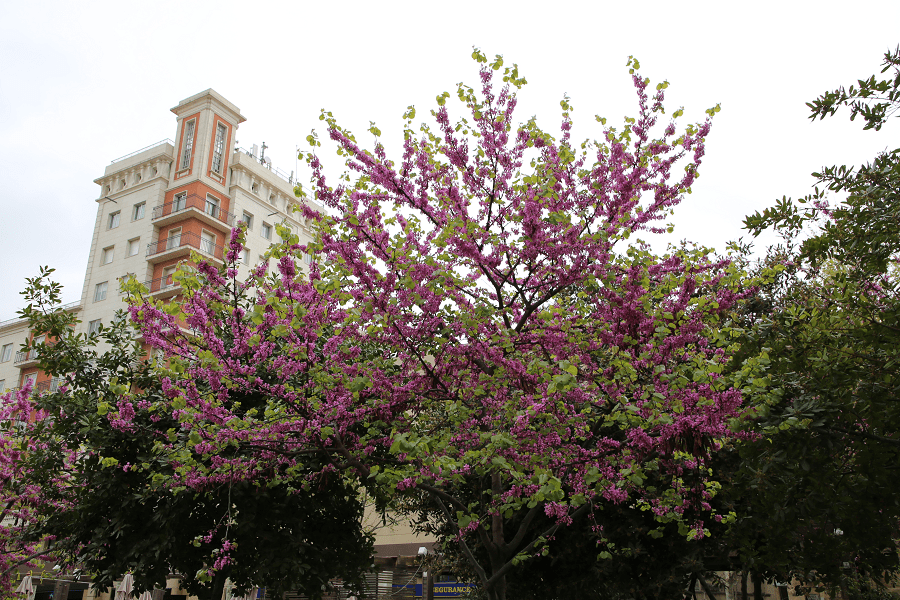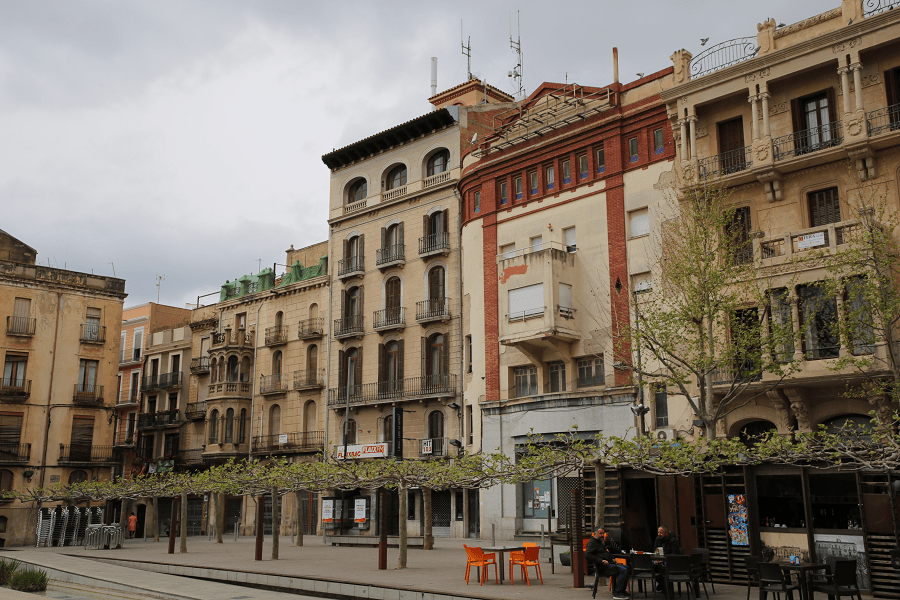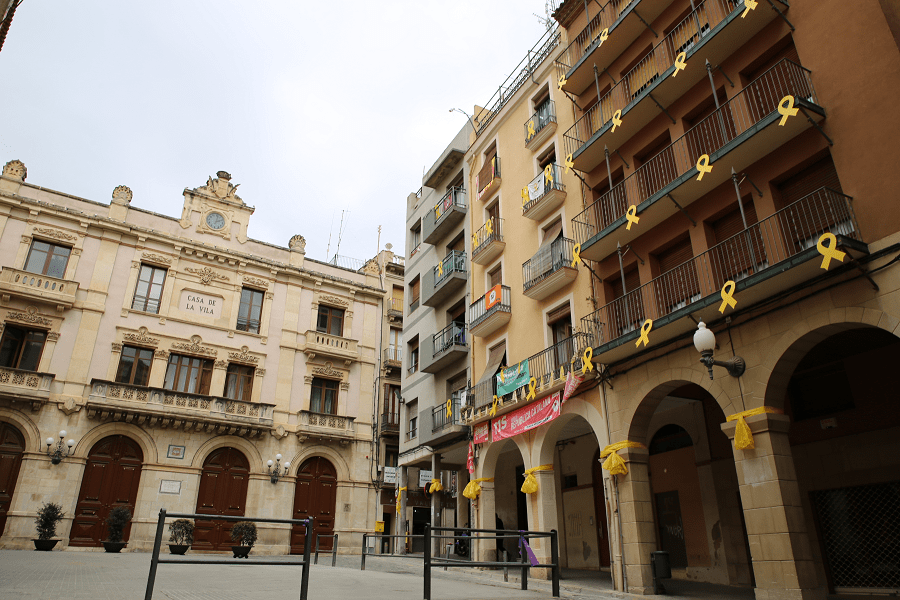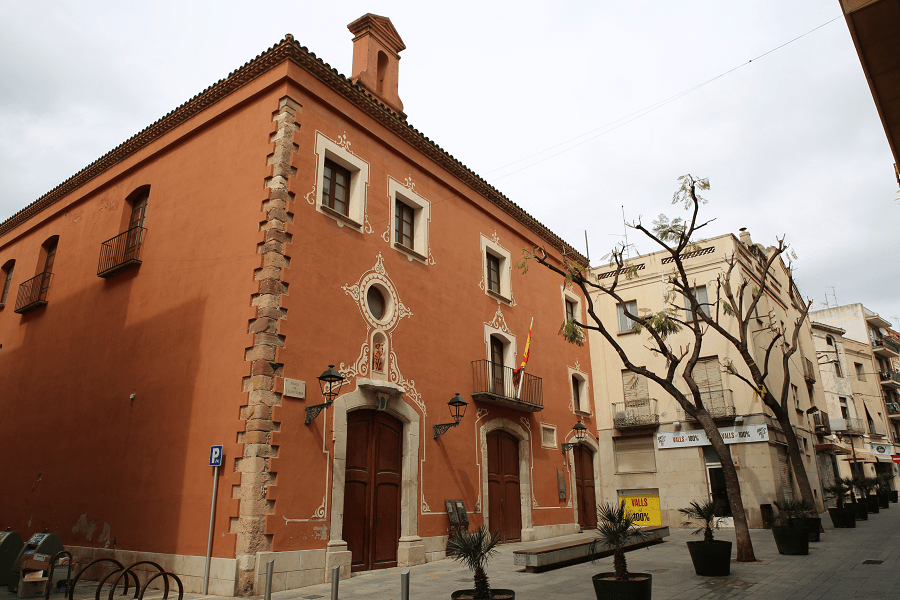Valls (cat. Valls) is a city and municipality in Spain, the capital of the Alt Camp region, Catalonia. It is located 19 km from Tarragona at 215 m above sea level. It includes the decentralised municipal entity of Picamoixons.
History
The city of Valls is nestled in a passage area. This means that since prehistory the area has been occupied by man. The findings of the Picamoixons site are good examples, among others. Later, at the time of the Iberians and in the later Romanisation, the areas of Valls were inhabited intensely. The Vilar Iberian site and the Ibero-Roman bakery Fontscaldes represent this.
But the proper birth of the city did not occur until the first half of the 12th century, once the Saracens, from Siurana and the Prades mountain range, were defeated.
In 1194 the parochial church of Sant Joan is already documented. In 1210 King Pere the Catholic granted it the privilege of the weekly market. In 1229 the town already had its Municipal Ordinances, one of the oldest in Catalonia, which shows the complexity of the economic and social structure of the city.
The town had two centers: the parochial church of San Juan (Romanesque), and the castle, owned by the archbishop, who was the absolute lord of the municipality since 1391, when King John I sold him its jurisdiction. It was at this period, in the last third of the 14th century, when the limits of the old city were formed and the walls were built.
The town had a great vitality and became the second population center of the Camp de Tarragona throughout the 14th, 15th and 16th centuries. It was this last century that saw the construction of several churches and convents and several important civil works. The most emblematic was the construction of the new parochial church of San Juan, between 1569 and 1583.
After the constructive drive of the late 16th century, the 17th century began with constant crises that worsened with the war against France and later with the Reapers War. The town of Valls, located at a strategic point between Lleida and Tarragona, was time after time besieged by the invading troops, and in August of 1694 the revolt of the poor (cat. l’avalot dels pobres) broke out, which extended to Solivella.
After the war, the city recovers its economic power until the beginning of the 18th century, when it is once again besieged, now on the occasion of the War of the Succession. In 1709, King Carlos grants it the title of a city for the great services rendered to his cause. However, Valls lost this title when King Philip V acceded to the Crown of Aragon.
It was part of the Vegueria of Tarragona until 1716. It then became part of the Tarragona Provincial Council from 1716 to 1833.
The enthronement of the new monarchy led to the emergence of new leaders, especially the Veciana family, who went to direct the Mossos d’Esquadra (autonomous police force of Catalonia), born in the city. The century saw the construction of the new sanctuary of the Virgin of Lledó, the church of Sant Antoni and the quarter. It was a time of great economic expansion highlighted by the cultivation of vineyard and its related trade. The eighteenth century ended with the founding of the Festes Decennals de la Mare de Déu de la Candela (Decennial Festivals of Our Lady of La Candela), in 1791, with great repercussions for the history of the city, and with the appearance of the first manifestations of the human tower traditions (from cat. castell) as we know it now.
The 19th century began with the French invasion during which the Battle of the Pont de Goi took place on February 25, 1809, and continued with the Carline Wars. Throughout the whole century, the city was constantly struck by riots (1834 and 1845), revolutionary events (1868 and 1869) and clashes between employers and workers. Logical confrontations if we consider that it was subject to strong industrialization, especially in the textile industry. We also note that in 1842 Valls reached 16,084 inhabitants, and as such became the fourth city of Catalonia in terms of population, after Barcelona, Reus and Tortosa. In 1850 the Teatre Principal was inaugurated.
The social instability and the plague of the phylloxera, which affected the vineyard, caused an economic collapse of the city. However, during the last two decades of the century, Valls saw several important events, such as the creation of the gas factory (1880), the foundation of Banc de Valls (1881), the arrival of the Barcelona-Vilanova-Valls train (1883), the birth of the Agricultural Society (1888) and the construction of the bell tower of Sant Joan (1897), the highest in Catalonia. Loyal to the Second Spanish Republic, it became victim of bombing, republican and nationalist repression, and the main churches and chapels were raided and burned.
During the 20th century, great economic, social and urban transformations have taken place. Soon after the serious destruction of the civil war (1936-1939), the city suffered from the stagnation that began in the previous century. However, it should be emphasized that important initiatives such as the Public Library, the Electricity Cooperative and the Escola del Treball (cat. vocational school) have emerged before the fight. Gradually, from the 50s there was a new industrial expansion. While the traditional sectors of the industry (textile, liquor and pickles), as well as agriculture, were reduced to a minimum, two metallurgical companies emerged to become very large. The creation of the Industrial Estate, in 1964, allowed the installation of new factories and diversification of the industrial portfolio of Valls. Simultaneously, the services sector, both public and private, has undergone an expansion.
Symbols
The official shield of Valls has the following blazon: lozenge coat of arms: of gules with a strip of argent. As a crest a city wall crown. Although the city’s coat of arms is the traditional one, as far as the pieces and enamels are concerned, it was not officially approved until 12 May 1983.
Traditions
The annual festive calendar of Valls begins with the Tres Tombs (cat. three tombs), celebrated in January, this tradition comes from the festival of San Antonio Abat, January 17th. The Tres Tombs of Sant Antoni Abat de Valls are among the busiest in Catalonia, those that present a better collection of work carriages and at the same time the most complex route as it passes through the old quarter of the city, which puts to the test the skills of the carriers.
The Tres Tombs has been declared a Traditional Holiday of National Interest by the Generalitat of Catalonia.
A few weeks later, on the last Sunday of January, in the middle of the winter, there is the Calçotada Festival, a gastronomic event dedicated to the gastronomic product that Valls has exported to the world. Calçotades (feast of calçots – spring onions barbecued over flame eaten with sauce) were born in Valls and have become one of the national dishes of Catalonia.
Carnival is a very spontaneous party in Valls. The most unique element is the traditional red caramel of Dijous Gras (Fat Thursday), which can only be found in Valls. The party ends on Ash Wednesday with the Enterrament del Carnestoltes (burial of a personage of a carnival king), featuring the figure of a giant of Lent. Once this event has finished, the giant is taken to the entrance of the Town Hall until Lent is over. Every week, one of the seven sardines that he has in his basket is taken down.
The Holy Week excels for the quality and antiquity of some of the icons carried in the procession on Good Friday night through the old quarter and the heart of the city. Here especially worth noting are the preserved icons of the sculptor Lluís Bonifaç Massó, from the 18th century, they are the most historic ones used during a parade in Catalonia.
The Sant Jordi Day commemorates the patron saint of Catalonia with books and roses sales on the streets.
Corpus de Valls as its central point has a procession. It is one of the oldest corpus celebrations in Catalonia and the whole of the peninsula, and the one with the greatest trajectory of the Camp de Tarragona.
The Sant Joan Baptista de Valls Festival, which takes place around the 24th of June, is considered the beginning of the traditional castell (cat. human tower) season. The castell is the most identifying tradition of Valls and one of the symbols of Catalonia. Since November 2010, the human towers are Intangible Cultural Heritage of Humanity, thanks to the proclamation of UNESCO. On the Plaza del Blat there is a plaque that points to the kilometre zero of the castell universe.
On first Tuesday and Wednesday of August, Firagost is organized, the Festa Major del Camp Català. The awnings that cover Plaça del Blat and Carrer de la Cort are part of the heritage of ephemeral architecture in Catalonia. The second duet between the bands of the castell performers takes place at the diada castellera de Firagost (the Firagost human towers day).
On the eve of the Onze de September (cat. eleven of September), National Day of Catalonia, the third castellera performance is held at the birthplace of the human towers.
As part of the Fairs of Santa Úrsula de Valls, on the Santa Úrsula Day, at the Plaça del Blat, takes place the most important castell performance in Catalonia, which also marks the closing of the traditional castells season. Since 2012, it is known as the Fòrum Casteller the biggest human tower fair.
The Christmas season features the traditional Christmas Market and the Vall’s Fair of capons, poultry and Christmas motifs. This live poultry fair is the only one in its kind that is held in the Camp de Tarragona and gives a distinctive character to Christmas in Valls. The representation of the Pastorets of Valls (Pastorets are a type of nativity play in Catalonia), by the Teatre Principal Group, is one of the great celebratory classics and is especially directed to a family audience. The work of the town of Valls in this popular theatre in the 50s and 60s of the twentieth century was the key to updating the way of performing Pastorets in Catalonia, and it made a mark on the revival of this Christmas tradition, especially in the counties of Tarragona. In 2011 the performance of the Pessebre vivent of Valls begun (pessebre vivent is a nativity play performed outside, normally in the old square etc.).
Every 10 years, around February 2, the festivity of the Mare de Déu de la Candela is celebrated, specifically in the years that end in 1, for example, 2001, 2011. They are declared Patrimony Festival of National Interest by the Government of Catalonia. During ten days, the city of Valls regains and exhibits its roots with proclamations, lights, castles and the ceremonial processions. The next ones will take place in 2021.
In literature
Vilaniu is the literary work that Narcís Oller centered in Valls, the city where he was born. Three of his best-known novels have their action based in part or fully in the town of Valls: Vilaniu, La locura, and La febre d’or (Gold Fever). The author evokes, following the romantic trend, the characters, places and customs of the town, but at the same time makes a very critical portrait of its closed, dull atmosphere and narrow mindedness.
Tourism and places of interest
The skyline of the city of Valls has one very characteristic element, the bell tower of Valls, of the church of San Joan. With 74 meters, it is the highest bell tower of churches in Catalonia. It is a work of the architect Francesc Villar Carmona and was built between 1895 and 1897. From the top there is a view of towns belonging to five different counties.
● Capilla del Roser, baroque chapel.
● Valls town walls from the 14th century.
● Doldellops or La Granja, former gothic farm.
● Coat of Arms of Can Dasca, baroque.
● Church of Sant Joan Baptista, 16th century.
Former Sant Roc Hospital: a building that dates back to 1562, when the Special Council of the town agreed to make a new hospital on a land near the town wall. Originally known as the Poor’s Hospital of Jesus Christ and placed under the invocation of Sant Roc in 1582. The building, recently restored, stands out for its central cloister, the pillar columns of the octagonal section and semicircular arches that travel through the facades of this inner courtyard perimeter. The exterior façade has a formal and balanced character. Three stone gateways of wide proportions give access to the two rooms destined for temporary exhibition, the cloister lobby and the upper floors of the building. At the moment it is the headquarters of the Institut d’Estudis Vallencs.
We can also find here the sanctuary of the Mare de Déu del Lledó, with an alabaster image found in 1366. It is located on the Passeig de Caputxins, currently it is a parish.
Museums
● Museum of Farm Cars and Tools.
● Museum of Valls.
Restaurants and cuisine
Valls is known for its culinary tradition, the feasting on calçots at what is known as a “calçotada“. The calçots are a large type of sweet-flavoured spring onion, barbecued over a pit of flaming vines, and eaten piping hot with a sauce. The calçotada continues with a main course of meats and sausages grilled over the same glowing coals, and is washed down with locally produced wines. The calçots are only available between December and May and draw diners from as far away as Barcelona. The calçot is grown locally and has a “PGI” (Protected Geographical Indication) status in the same way that champagne does.
In the city there are more than 15 restaurants of a fairly high quality. Prices are cheaper than in Barcelona and Lleida. Mostly located within the borders of the Old Town.
Shopping
Shopping in Valls is not a priority on the tourist program. Only on weekends city bazaars and fairs, which traditionally take place on weekends or on some public holidays in the main square, can be of tourist interest. At the fairs, in particular, you can come across exclusive products grown in the region. Among them are some well-known wine and cheese brands in Spain.
Shortest distances
From Girona 2 hr 3 min (184 km) via AP-7
From Lleida 59 min (81.6 km) via AP-2
From Tarragona 19 min (21.9 km) via Autovía Tarragona-Lleida/A-27
From Barcelona 1 hr 18 min (103 km) via AP-7
From Madrid 5 hr 25 min (530 km) via AP-2 and A-2
From Andorra 2 hr 42 min (177 km) via C-14
Main information
Area: 55.3 sq. km
Coordinates: 41°17′18″N 1°15′7″E
Population: 24,156
Languages: Spanish, Catalan
Currency: euro
Visa: Schengen
Time: Central European UTC +1








